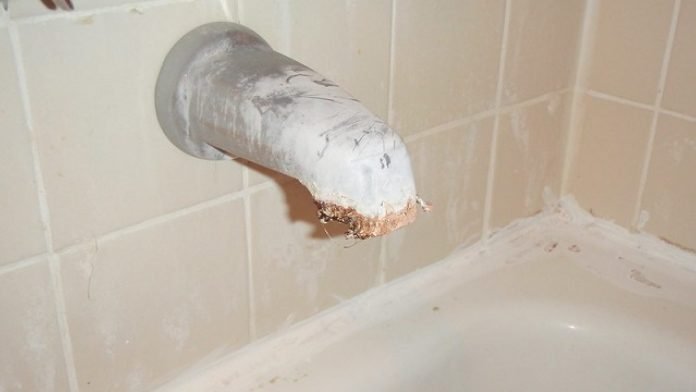Last Updated on June 30, 2023 by
If you’ve ever lived somewhere with hard water, you’re familiar with the white film left on your dishes, kitchen sink, and bathtub after leftover water evaporates away. This is known as limescale, and while drinking hard water may not be harmful to your health—the limescale deposits it causes can wreak havoc on your home in more ways than one. Here is everything you need to know about limescale.
Table of Contents
What Exactly Is Limescale?
The water we drink is not purely hydrogen dioxide, or else it would be bland and tasteless. When water has a high mineral content (specifically calcium and magnesium) it is considered hard water. Limescale is the deposits left when the water evaporates.
Problems You May Face If You Have Limescale
This is what you’d expect with limescale, and a few ways to fix it.
Sticking Faucets And Tub Spouts, Clogged Showerheads
Anyone who has ever googled how to remove a tub spout that’s stuck knows all about this. Limescale deposits, if left unchecked, will clog up any tight spaces. This means that over time, your faucets, tub spouts and fittings of your bathroom and kitchen will get increasingly more difficult to operate simply due to the limescale buildup. This is especially prominent around hot water fixtures because the water evaporates much faster and consequently leaves behind more limescale deposits.
Corrosion
You may be thinking that a few clogged fixtures aren’t such a big deal and that you can ignore the dreaded white film that forms everywhere. However, there’s more to limescale than such minor problems. As limescale deposits grow, the metal begins eroding away. Obviously, as the metal erodes, the fixtures become weaker and are prone to breaking. Needless to say, sometimes the damages that can occur from breaking bathroom and kitchen fittings can involve water damage—which can quickly get very costly.
How To Get Rid Of The Dreaded White Limescale Film
Knowing all this, you’re probably frantically searching for ways to make sure you don’t get limescale if you have hard water. Changing your water source is not as easy as it sounds, so you’ll have to get rid of the limescale and prevent its build up. Firstly, always make it a point to wipe everything down—never allowing water to actually evaporate off a surface. This means drying your dishes after doing them, wiping down the sink, and mopping the shower after you’re done.
If you do notice any limescale anywhere, household vinegar is an excellent solution. For example, a well-known trick is to boil a kettle with diluted vinegar, to get rid of the limescale deposits on the bottom. You can use the same solution on your faucets and showerhead, or anything else. For more tough deposits that have been neglected for some time, you may need to buy a special solvent specifically made to get rid of calcium deposits. Otherwise, vinegar is an easy fix to clear away any limescale. Tougher deposits may take a little more time, so try soaking the shower head in a bag of vinegar.
Limescale isn’t hard to manage, but when you neglect to clean it, it can wreak havoc in your home.
Apart from that, if you are interested to know about 5 Signs of a Clogged AC Filter then visit our Home Improvement category.



























